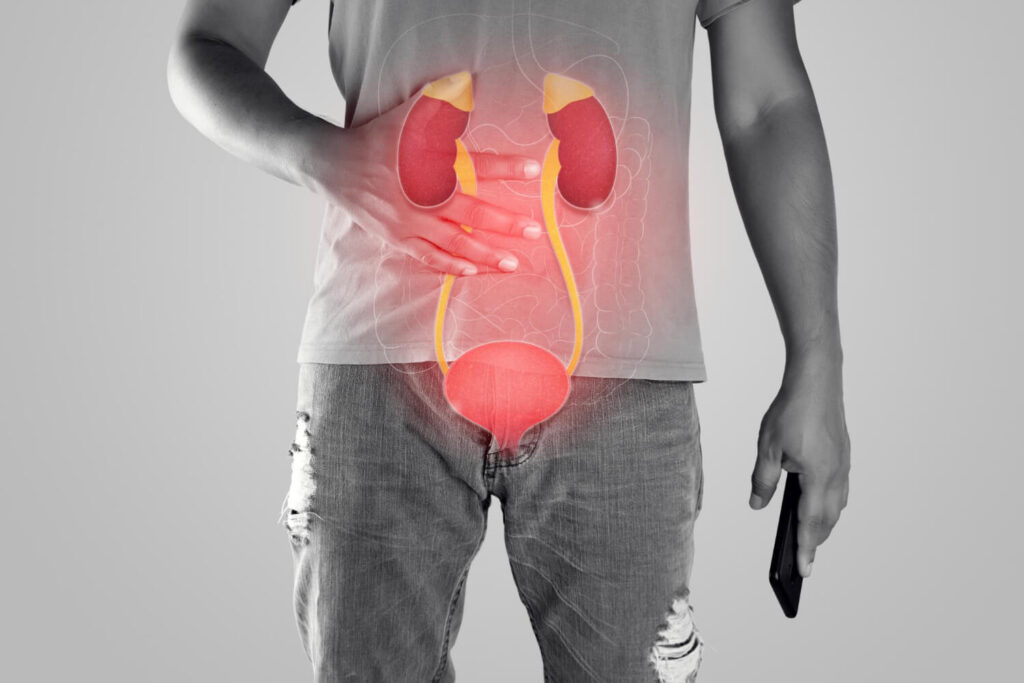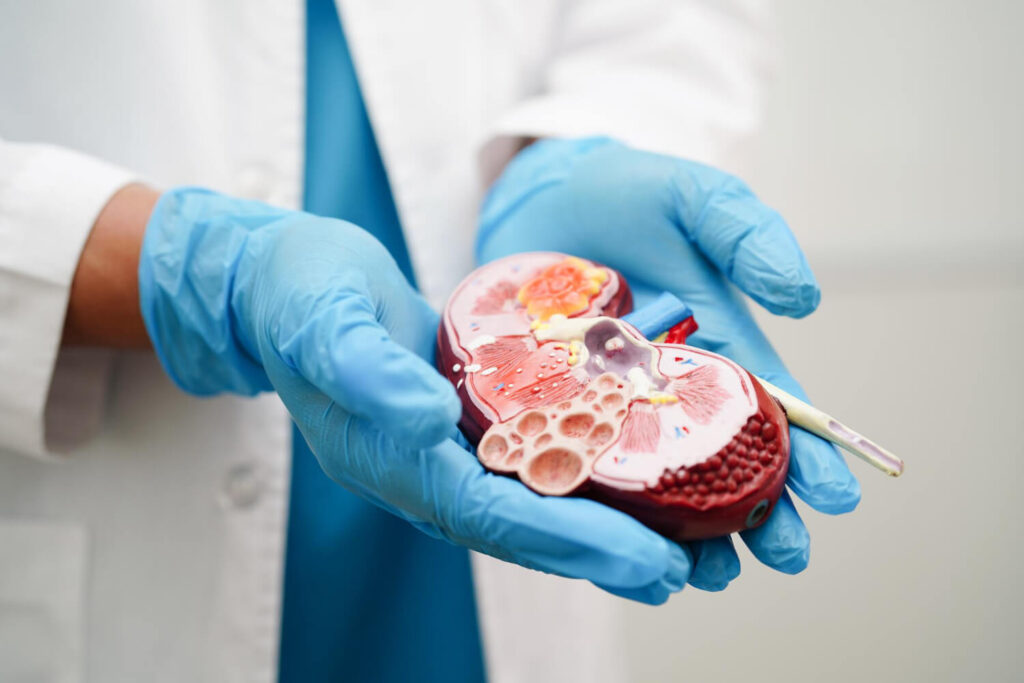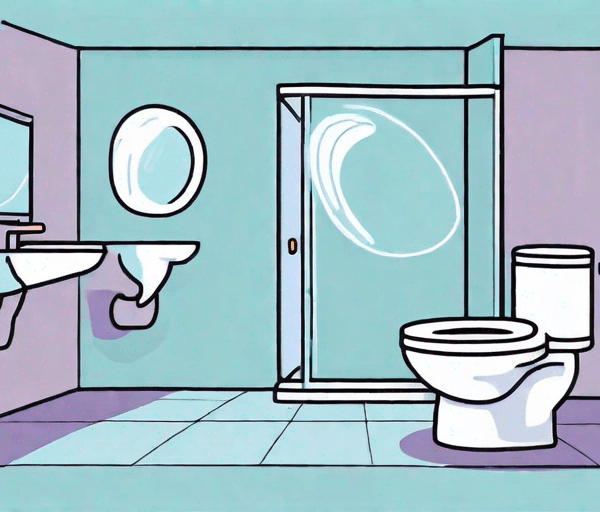Kidney stones, also known as renal calculi, are a common urological condition that affects millions of people worldwide. The terms “nephrolithiasis” and “urolithiasis” are often used interchangeably to describe the presence of these stones in the kidneys or urinary tract. However, there are subtle differences between the two terms that are worth exploring.
In this blog, we’ll help you understanding the key difference of these 2 terms. Thus, helping patients discover more about their urological condition. Let’s begin!
Understanding Nephrolithiasis
Nephrolithiasis, commonly known as kidney stones, is a condition characterized by the formation of stones in the kidneys. These stones are composed of various substances, including calcium, oxalate, phosphate, uric acid, and cystine. The exact cause of nephrolithiasis can vary from person to person, but several risk factors have been identified.
Patients suffering from kidney stones may feel pain due to its movement in the urinary system. It can affect the overall health of patients, especially if not treated immediately. That’s why it’s best to reach out to a health professional when sudden symptoms are felt.
Common Risk Factors for Nephrolithiasis
Developing this condition can be a result of various factors. It’s important to note that not everyone can experience the same situation that leads to the development of the condition.
Let’s uncover each of the known factors below!

Lack of Fluid
One of the primary risk factors for nephrolithiasis is inadequate fluid intake. When the body doesn’t receive enough fluids, the urine becomes concentrated, increasing the chances of stone formation. It is crucial to maintain proper hydration to prevent the crystallization of stone-forming substances.
Oxalate Food
Additionally, a diet high in oxalate-rich foods, such as spinach and chocolate, can contribute to the development of kidney stones. It’s important to have a balanced diet to prevent the accumulation of this substance. That’s because too much oxalate can increase the possibility of kidney stones formation (e.g., calcium oxalate).
.Medical History
Family history also plays a role in nephrolithiasis. If someone in your family has had kidney stones, you may be more prone to developing them as well.
Other Medical Condition
On the other hand, certain medical conditions can also be an influential factor for developing kidney stones. For instance, hyperparathyroidism and urinary tract infections can increase the risk of stone formation.
Exploring Urolithiasis

Urolithiasis, also known as urinary tract stones, is a condition characterized by the presence of stones anywhere in the urinary tract. This includes the kidneys, ureters, bladder, and urethra. While nephrolithiasis specifically refers to kidney stones, urolithiasis encompasses a wider range of stone locations and compositions.
It can be caused by various factors, including dehydration, dietary factors, genetic predisposition, and certain medical conditions. Dehydration, for example, can lead to concentrated urine, which increases the likelihood of stone formation. Additionally, certain dietary factors such as high intake of oxalate-rich foods or excessive salt consumption can contribute to stone formation. Genetic factors and certain medical conditions, such as urinary tract infections or metabolic disorders, can also increase the risk of developing urolithiasis.
Key Differences Between Nephrolithiasis and Urolithiasis
Comparing the Causes
While both nephrolithiasis and urolithiasis share common risk factors such as dehydration, dietary factors, and certain medical conditions, nephrolithiasis specifically refers to the formation of stones in the kidneys. On the other hand, urolithiasis encompasses stones that can form anywhere in the urinary tract, including the kidneys, ureters, bladder, and urethra.
Nephrolithiasis is a condition characterized by the presence of solid masses or crystals in the kidneys. These stones can vary in size and composition, with the most common types being calcium oxalate and uric acid stones. The formation of kidney stones is often attributed to factors such as inadequate fluid intake, high intake of certain foods (such as oxalate-rich foods), and certain medical conditions like hyperparathyroidism.
On the other hand, urolithiasis is a broader term that encompasses the presence of stones anywhere in the urinary tract. This includes the kidneys, ureters (the tubes that connect the kidneys to the bladder), bladder, and urethra. Urolithiasis can also be caused by similar factors as nephrolithiasis, such as dehydration and dietary factors. However, the location of the stones in the urinary tract can vary, leading to differences in symptoms and treatment approaches.
Symptom Differences and Similarities

The symptoms of nephrolithiasis and urolithiasis are largely similar, as the presence of stones in the urinary tract can lead to pain, blood in the urine, and urinary urgency. However, the severity and specific location of these symptoms may differ depending on whether the stones are located in the kidneys, ureters, bladder, or urethra.
In cases of nephrolithiasis, where the stones are located in the kidneys, the most common symptom is severe flank pain. This pain is often described as sharp and stabbing, and it may radiate to the lower abdomen and groin. Other symptoms may include frequent urination, cloudy or foul-smelling urine, and the presence of blood in the urine.
When stones are located in the ureters, the tubes that connect the kidneys to the bladder, the pain may be felt in the lower back or sides. This pain is often referred to as renal colic and can be excruciating. In addition to pain, symptoms of ureteral stones may include urinary urgency, frequent urination, and blood in the urine.
If the stones have passed into the bladder, symptoms may include lower abdominal pain, urinary urgency, and blood in the urine. Stones that have reached the urethra, the tube that carries urine from the bladder out of the body, can cause pain during urination and difficulty passing urine.
Treatment Approaches: A Comparative View

The treatment approaches for nephrolithiasis and urolithiasis are often similar, regardless of the location of the stones in the urinary tract. Non-invasive methods are commonly employed to treat stones in both conditions. However, more invasive procedures may be required for larger or complex stones that cannot be effectively treated with non-invasive approaches.
Here are some of the common treatment procedures to address and remove kidney stones.
ESWL
It is a non-invasive procedure that uses shock waves to break down kidney stones into smaller fragments, making them easier to pass through the urinary tract. This procedure is often recommended for stones that are less than 2 centimeters in size and located in the kidneys or upper ureter.
Ureteroscopy
On the other hand, ureteroscopy, involves the use of a thin tube with a camera (ureteroscope) to visualize and remove stones in the urinary tract. This procedure is often used for stones located in the lower ureter, bladder, or urethra. During ureteroscopy, the stone can be fragmented using laser energy or removed in its entirety.
Percutaneous Nephrolithotomy (PCNL)
In cases where non-invasive methods are not effective or feasible, more invasive procedures such as percutaneous nephrolithotomy (PCNL) or open surgery may be considered. PCNL involves making a small incision in the back to access the kidney and remove the stones. Open surgery, although less common, may be necessary for very large or complex stones that cannot be treated with other methods.
It is important to note that the choice of treatment approach depends on various factors, including the size and location of the stones, the patient’s overall health, and the preferences of the healthcare provider. A thorough evaluation and discussion with a urologist are essential to determine the most appropriate treatment plan for each individual case.
Prevention Strategies for Kidney Stones

Lifestyle Changes to Prevent Kidney Stones
Preventing kidney stones involves making certain lifestyle changes to reduce the risk factors associated with stone formation. One of the most critical steps is to stay adequately hydrated by drinking plenty of water throughout the day. Maintaining a healthy weight, engaging in regular physical activity, and avoiding excessive consumption of salt, sugar, and animal protein can also help prevent the recurrence of kidney stones.
Dietary Recommendations to Avoid Stone Formation
Furthermore, modifying your diet can play a significant role in preventing kidney stones. It is advisable to limit the intake of oxalate-rich foods such as spinach, rhubarb, and chocolate, as well as foods high in animal protein. Increasing your intake of dietary calcium through sources like low-fat dairy products can help bind to oxalate in the digestive system and reduce its absorption into the bloodstream.
Consulting with a registered dietitian or healthcare provider can be beneficial in developing a personalized dietary plan that suits your specific needs and helps keep kidney stones at bay.
Conclusion
Nephrolithiasis and urolithiasis both pertain to the presence of stones within the urinary tract, with nephrolithiasis focusing specifically on kidney stones. While the terms are often used interchangeably, understanding the subtle differences can enhance our understanding of these conditions and the appropriate treatment options.
If symptoms occur, confirming the presence of kidney stones, it’s a must to consult with a health expert immediately. Make informed decisions about your urological health by taking proactive steps to prevent the formation of kidney stones. Book an online consultation with a urologist today!



